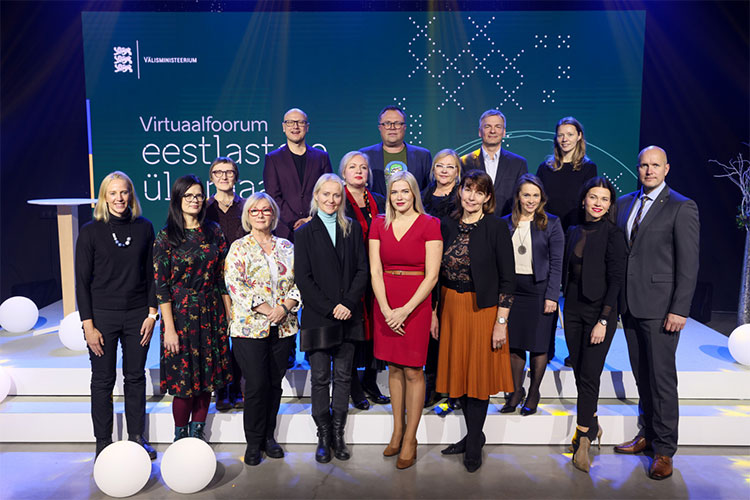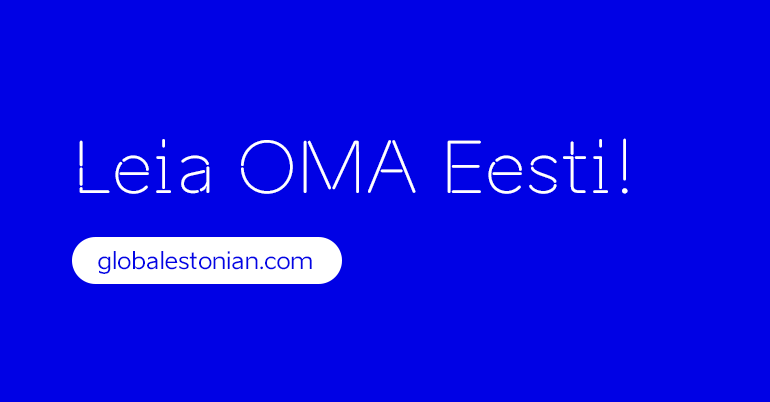Quo vadis, diaspora media?
The editors of diaspora publications, journalists and communicators from Estonian communities abroad met in Tallinn for the first time.
The Ministry of Foreign Affairs invited people organising information exchange for our compatriots in various corners of the world to meet in Tallinn from 1 to 3 December. Participants included editors of diaspora publications in Germany (Eesti Rada, Kama Cultural Society), USA (Vaba Eesti Sõna), Canada (Eesti Elu and the online publication Estonian World Review), Sweden (Rahvuslik Kontakt), Australia (the Estonians in Australia website) and journalists from Italy, Türkiye, Canada and Estonia (Estonian World, Peterburi Teataja, the Global Estonians gateway).

At the Virtual Form on December 3rd. 1. row from left: Kristi Barrow (Estonians in Australia), Karin Aanja (Eesti Rada), Kärt Ulman (Vaba Eesti Sõna), Hille Hanso (Türgi), Anett Numa (virtuaalfoorumi moderaator), Marin Mõttus (üleilmse eestluse diplomaatiline eriesindaja VäM-st), Sirle Sööt (Rahvuslik Kontakt), Keit Spiegel (üleilmse eestluse nõunik VäM-st), Peeter Püvi (peakonsul Eesti saatkonnast Helsingis); 2. row from left: Riina Kindlam (Eesti Elu ja Vaba Eesti Sõna kirjasaatja), Kadri Linnas (üleilmse eestluse nõunik VäM-st), Ülle Toode (Itaalia); 3. row from left: Silver Tambur (Estonian World), Marcus Kolga (Kanada), Tauno Mölder (Estonian World Review), Sandra Paulus (Kodanikuühiskonna Sihtkapital – KÜSK)
For many people, the print edition is still the source of the first news of the day with their morning coffee. At the same time, a large portion of important information has moved online and to social networks. How do our diaspora publications, which are essentially niche publications, survive in these circumstances? The three-day programme, which was managed excellently by the Integration Foundation, aimed at offering inspiration and new ideas for sustainable management, as well as learning about the experiences of others.
Speakers included the founder and editor of EDASI Janeck Uibo, who has managed a seemingly impossible task on the Estonian media scene – successfully publishing a so-called slow journalism magazine. During a visit to Estonian Public Broadcasting, Anvar Samost, head of the news department at the Estonian Public Broadcasting, provided a realistic insight into the daily work of the department. The discussion included a question about the exposure of expat Estonians in Estonian media. Estonians living abroad often feel there is not enough awareness about them in Estonia. According to Anvar Samost, an Estonian is an Estonian, regardless of whether they live in Estonia or abroad, which is why there is no point in highlighting it in the coverage or making a special mention of it. Ilmar Raag spoke about the mechanisms of spreading false information and how they can find their way to diaspora publications. The programme also included much more.
Undersecretary of the Ministry of Foreign Affairs Kyllike Sillaste-Elling gave an overview of developments in the war in Ukraine, Kristjan Kaldur from IBS elaborated on the results of the largest recent diaspora study, Raul Rebane spoke about Estonia’s political scene, Marcus Kolga shared his experience of strategic communication in Canada. At the e-Estonia Briefing Centre, visitors explored the possibilities of Estonia’s e-state that should have more coverage abroad (e-voting, telenotary services, digital signatures). At the International House, visitors were told about support available for foreign spouses of Estonians who have moved back to Estonia in adapting to life in Estonia. A tour of Kopli demonstrated the quickly developing district of Tallinn with all its benefits and issues. It was an extraordinary experience to visit the Office of the President of Estonia, where Indrek Treufeldt spoke about his job as the president’s communication adviser. The finale came with the virtual forum for Estonians worldwide at the Rakett studio in Ülemiste.
A few recurring ideas for developing publications emerged. For example, the proposal for niche publications to cover topics no one else is covering. People are always interested in the stories of other people from their community, events and news related to their particular communities. Additionally, publishing a newspaper or a magazine requires an inner drive, enthusiasm and smart management.
However, most importantly, people could meet face to face. Some met in person for the first time, even though they had known each other’s names for a long time. We hope this event laid the foundation for a fun and functioning network that helps unify and enrich the shared information space of Estonians, regardless of where they happen to live.
Related articles:
https://www.vabaeestisona.com/et/riina-kindlam-kui-ulgueesti-meedia-teg…
https://eestielu.com/et/eesti-lehetegijad-valismaal-meediaruum-2022-mot…







